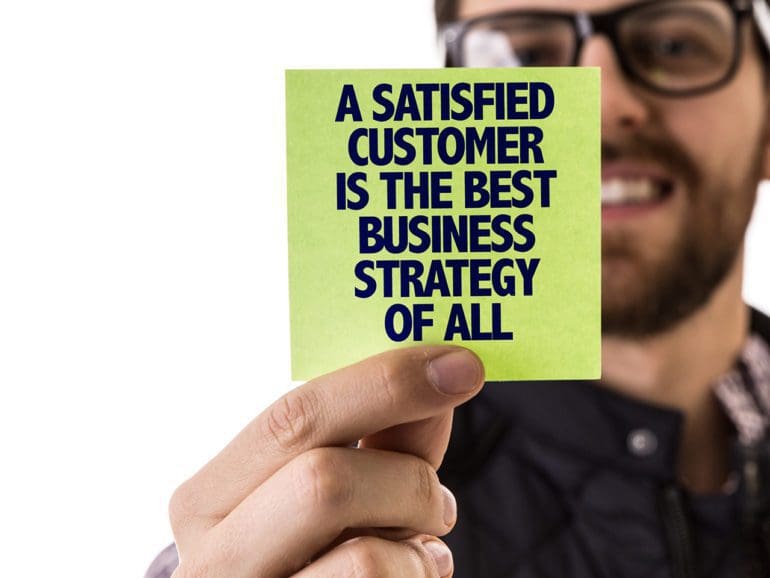Thirty years ago, Nanda Kumar founded SunTec as a telecom company.
Still, before the advent of the internet, he changed his young firm’s focus from a product-centered approach to one with more attention paid to the individual customer.
That was the beginning of his relationship-based pricing model, one that makes even more sense in today’s era of hyper-personalization.

The internet allowed businesses to connect beyond the group to the individual.
For Kumar, it meant delivering customized products and services that better meet the needs while driving value.
He immediately saw its potential across multiple sectors, including banking and financial services.
Every industry’s sole purpose is to provide value to its customers in some form, Kumar said. By employing digitization, one can change inputs to produce more valuable outputs.
It works for both improving outputs, along with internal processes helping generate those results. He likens it to biology and making improvements at the cellular level that combine to affect significant change in the whole. Taken on its whole, it allows SunTec to pursue a goal of complete ecosystem management.
And that process can be steadily refined, Kumar explained, to the point that every cell can perform at peak level with zero waste.
Digestion vs. distribution
Think of ERP as “digestive” business processes while enterprise value chain management focuses on distribution.
Extending that ecosystem philosophy to finance makes sense because it allows institutions to consider the entirety of a customer’s needs and the possible transactions they can have with that person, Kumar explained. Once they understand how those possibilities can fit together, they can adequately develop systems to provide them properly.
The mortgage process transforms from a straight borrowing experience to a homeownership model where savings plans contribute to the goal.
Financial institutions are perfectly positioned to engage in such a more profound relationship if they can efficiently leverage the years of spending data they have on their customers. They can analyze the customer’s demographic and financial data to identify neighborhoods they should consider and even refer them to agents specializing in those sections.
From there, it’s a small step to add in renovators and other value-added services.
Banks building ecosystems
SunTec recently worked with Arizent to research whether North American banks have the technology they need to deliver on their 2022 retail banking priorities. The good news is 97% of surveyed banks are building a partner ecosystem for digital banking.
They know customers and can bring in other service providers who can extend the institution’s service capabilities. That allows them to factor in the risk of doing business with different groups within a system, efficiently facilitating automatic transactions.
Consider Amazon, Kumar said. They offer credit based on data they compile within their ecosystem, including customer ratings and returns.
“That’s the kind of possibility a bank can offer to its ecosystem, using their own customer data and also helping the customers not go outside their financial viability.”
Of the 97% building a partner ecosystem, 43% said their main objective is to offer new and innovative products and services, while 23% are looking at best-in-breed technology to deepen customer relationships. Other reasons are data monetization (16%) and system efficiency (15%).
Going beyond monetization
Those aims can switch somewhat based on an institution’s asset size and the state of its core technology. Those with between $10 and $25 billion are most likely to want to monetize their platform, while those with larger sums prioritize new product and service offerings.
If their core system offers some degree of modern technology, either on its own or with legacy systems, innovation is likely more of a goal than straight monetization.
“So even simply enhancing their capability or bringing in the system capability is going to bring in value to their customers and into their operations,” Kumar said.
With more institutions pursuing primacy in their customer’s daily financial journey, adopting the ecosystem model makes sense, but there are some key factors to consider, Kumar cautioned. One is governance as you extend your brand to cover a larger ecosystem. Proper safeguards and procedures need to be in place so these extra activities will produce positive customer sentiment.
Governments are playing a role in fostering these ecosystems, Kumar noted.
In India, the National Payments Corporation of India, an umbrella organization for operating retail payments and settlement systems in the country, was started by the Reserve Bank of India and Indian Banks Association under the provisions of the Payment and Settlement Systems Act (2007) for creating a full payment and settlement infrastructure.
Its Unified Payments Interface is a system that powers multiple bank accounts into a single mobile application combining several banking features, fund routing, and merchant payments.
The system functions effectively in place of direct regulation.
‘Game-changer’
“That will be a phenomenal game-changer in the e-commerce arena,” Kumar said. “The monopoly of many players can be completely turned (but) they can also be part of this ecosystem.”
As institutions deepen their understanding of the customer, they can benefit partners and suppliers who are also part of the ecosystem, Kumar explained. Each one is its own company with its unique cash flows and financing needs. And when a certain degree of trust is reached, suppliers can manufacture goods and produce services more in lockstep with a customer’s needs.
Because of this better level of customer knowledge, you lessen some of the risks associated with BNPL programs, Kumar said.
“If you can go to the extent of getting the customer’s spend analysis and the affordability which a bank can do and then it is it’s a different proposition to the risk assessment and lending decision.”
And if that assessment suggests the customer is not a good bet to meet their BNPL obligations, you’ve saved yourself some headaches, even if they take their business elsewhere, Kumar said. One SunTec customer began charging for certain protections and did lose some zero-balance accounts, but those bygone customers ended up costing some other bank more money in the end.
“That uncertainty of the transaction is what the ecosystem can take away,” Kumar said.
ESG-friendly
This ecosystem model can also accommodate ESG considerations, he said. It can calculate the carbon footprint from a particular spending possibility in real-time and identify the closest available supplier to reduce fuel use.
Peter Donovan Yorke, SunTec’s SVP and head of marketing, said ESG had been an essential topic of conversation at recent advisory board meetings.
“You can provide credit to them and even offer preferential interest rates to those customers,” Yorke concluded.


